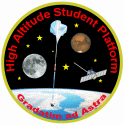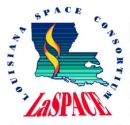



Payload 03 Information
Payload Flight Number:
Institution:
Payload Title:
Stratospheric Measurements of Charged and Neutral Radiation
Student Leader:
Faculty Advisor:
Payload class:
Small
Payload ID Number:
03
Mass:
1.8 kg
Current:
410 mA
Serial Downlink:
YES
Analog Downlink:
NO
Serial Commands:
YES
Discrete Commands:
NO
Payload Specification & Integration Plan
Due: 06/23/2017
Delivered:
Payload Integration Certification
Scheduled: 08/04/2017
Actual:
Flight Operation Plan
Due: 07/28/2017
Delivered:
Final Flight / Science Report
Due: 12/08/2017
Delivered:
Abstract:
The hostile radiation environment of space poses a serious and complex risk to the health of astronauts during extra-planetary missions. Current estimates of consequential adverse health effects remain highly imprecise due to uncertainties in radiation quality factors. Recent estimates of cancer risk projections for a typical Mars mission have associated uncertainties of 400-600%. Existing space qualified radiation detectors lack the ability to accurately measure radiation quality factors. Specifically, the active monitoring of exposure to neutrons, a major radiation dose hazard, is inadequate. We have developed the Charged & Neutral Particle Tissue Equivalent Proportional Counter (CNP-TEPC), a unique radiation dosimeter with the capability of separating radiation dose contributions from charged particles and neutrons. The tissue equivalence of the detection system enables the collection of meaningful data since the dosimeter behaves analogously to a human cell. This real time radiation measurement device satisfies all radiation monitoring requirements in current manned missions to low earth orbit and all anticipated requirements of future manned missions into deep space. A balloon flight will allow for the characterization of the instrument in a near space-like environment, and will play a key role in our mission of classifying radiological hazards in space.
Payload Application:
Payload Integration Plan:
Science Report:
Monthly Briefings:
|